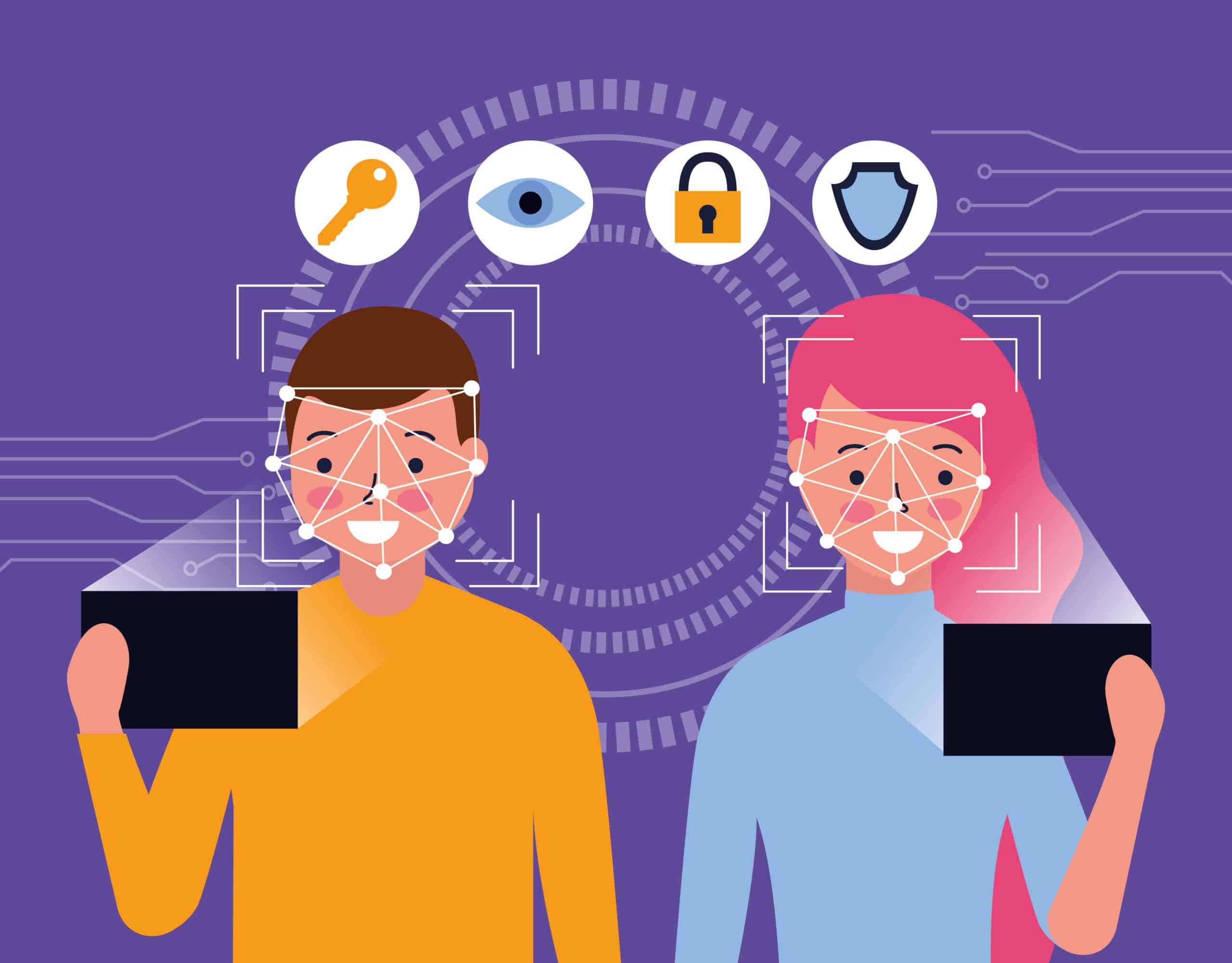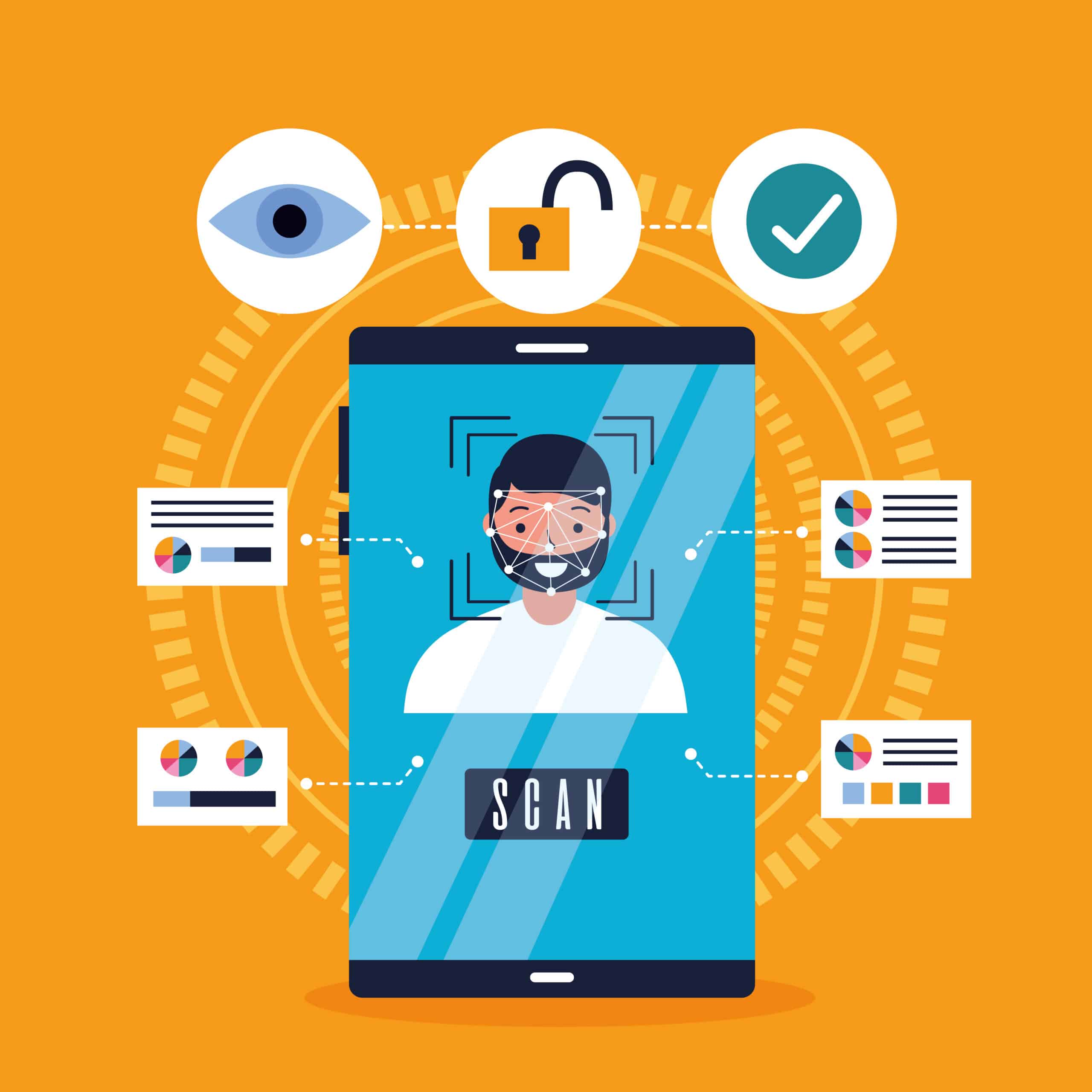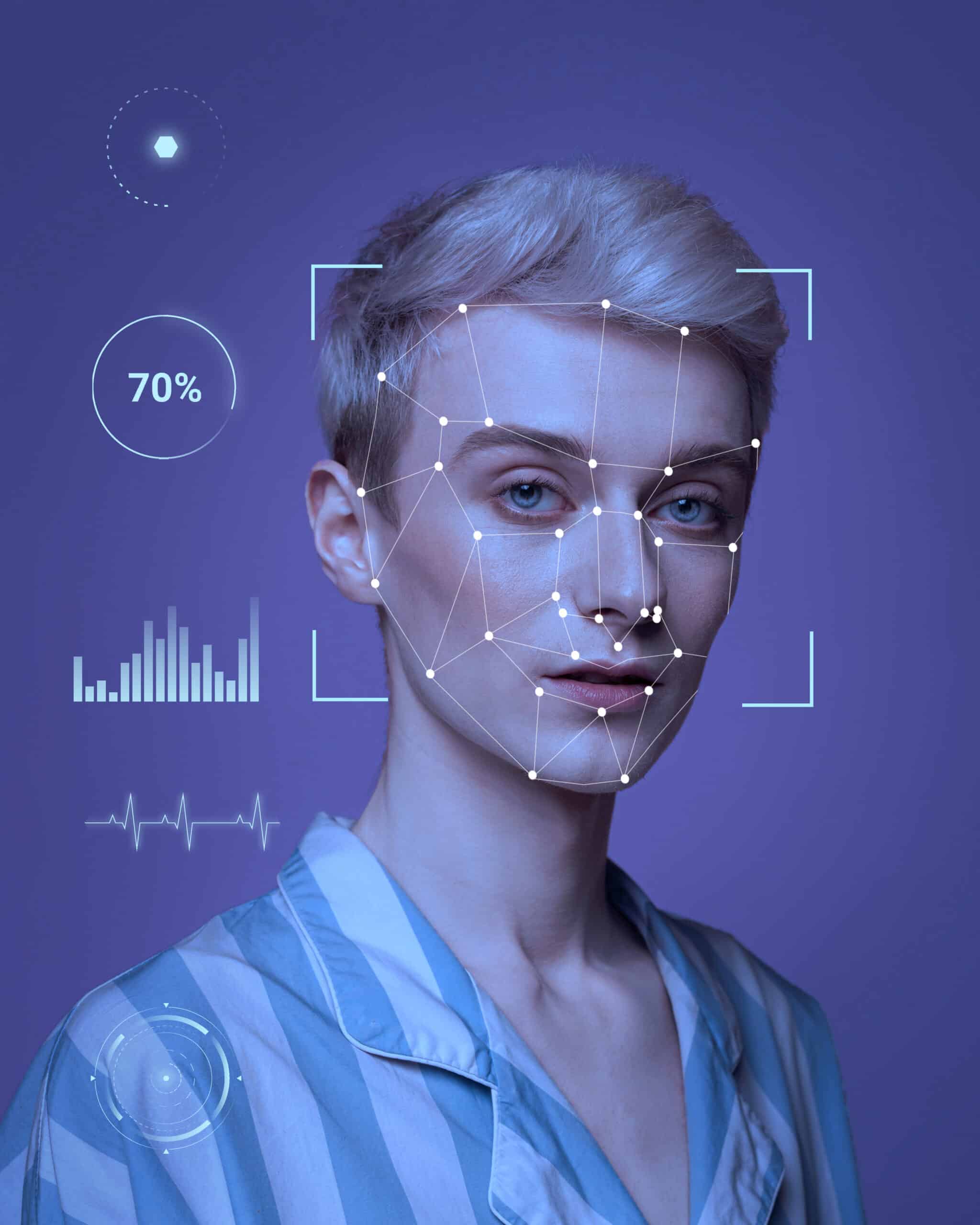Facial Recognition for Identity Verification: The Future of Security
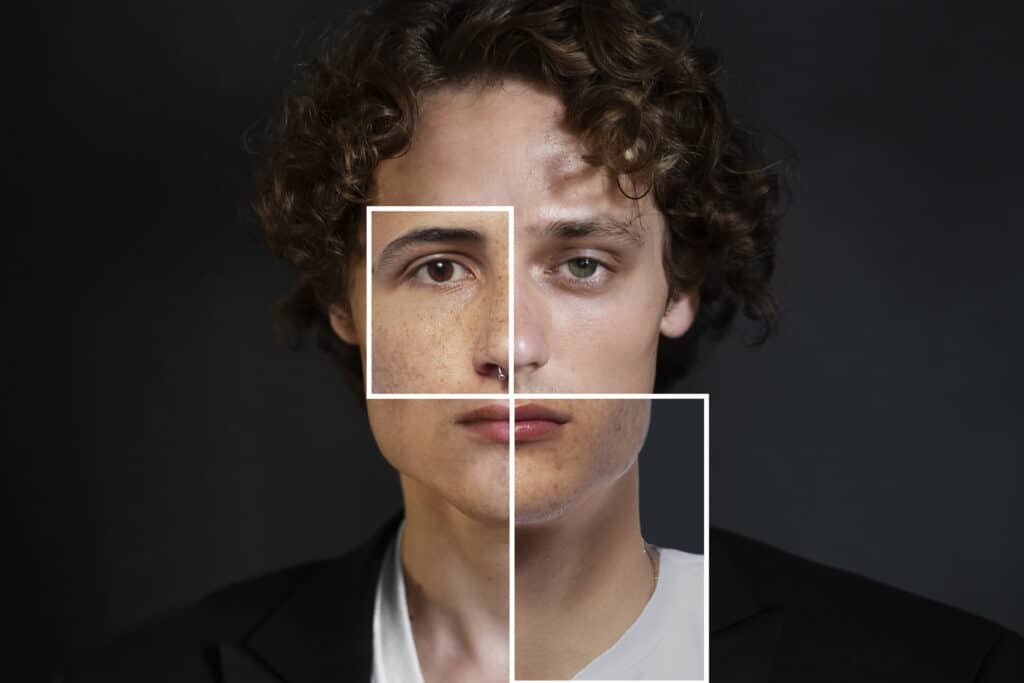
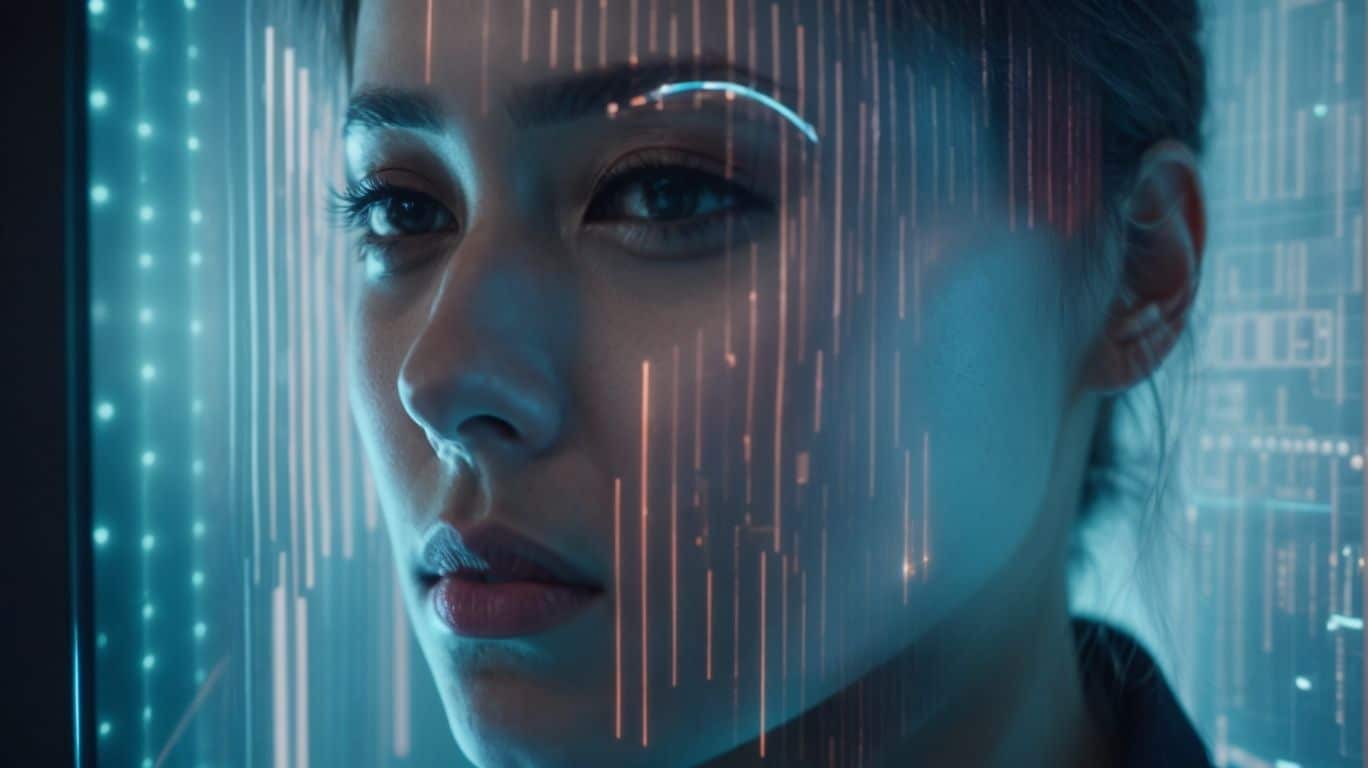
Facial recognition technology has become a game-changer in security measures, revolutionizing the way we verify identities. From airport security to banking services, various industries are utilizing facial recognition to enhance security, improve efficiency, and reduce human error. This advanced technology also raises concerns about privacy issues, biases, and potential misuse of data. We will delve into how facial recognition identity verification works, the future of security with facial recognition, its applications, benefits, concerns, and how it can be used responsibly.
Join us as we delve into the next frontier in security – facial recognition identity verification.
What Is Facial Recognition Identity Verification?
Facial Recognition Identity Verification involves the use of advanced biometric technology to authenticate individuals based on their unique facial features.
This cutting-edge process relies on analyzing key facial characteristics, such as the distance between eyes, nose shape, and jawline structure, to create a unique facial profile for each individual. Biometric algorithms then compare these features with stored data to confirm identity.
Facial recognition technology has revolutionized security measures, offering a highly secure and convenient method of identity verification. The accuracy and speed of facial recognition authentication make it a preferred choice for various sectors, from securing mobile devices to enhancing border control and access to restricted areas.
How Does Facial Recognition Identity Verification Work?
Facial Recognition Identity Verification operates by utilizing sophisticated algorithms to analyze facial features and patterns for accurate authentication.
These algorithms work by first detecting the face in an image or video stream, then proceeding to analyze and extract various facial landmarks such as the distance between the eyes, shape of the nose, and contours of the lips.
The system compares this data against stored templates to determine a match, accurately identifying individuals based on their unique facial patterns.
The process involves complex computations and neural networks to ensure high levels of accuracy and security in facial recognition technology.
What Are the Applications of Facial Recognition Identity Verification?
Facial Recognition Identity Verification finds applications across various sectors such as airport security, border control, banking, and law enforcement.
By using advanced algorithms to analyze unique facial features, this technology has revolutionized security measures by offering a more efficient and accurate way to authenticate individuals.
In addition to its role in identity verification, facial recognition plays a significant role in enhancing biometric verification processes, providing a secure and convenient method for accessing sensitive information or locations.
In critical areas like airports, borders, financial institutions, and law enforcement agencies, facial recognition enables real-time surveillance to monitor and identify potential threats, ensuring a proactive approach to maintaining safety and security.
Airport Security
Airport Security utilizes facial recognition technology for efficient access control and identification by cross-referencing facial images with the database.
The integration of facial recognition in airport security systems has revolutionized the way airports carry out security processes. By leveraging advanced algorithms, the technology can accurately match facial features to individuals stored in the database, providing a quick and reliable means of identification. This has significantly improved security measures by reducing the chances of unauthorized access or identity fraud.
The real-time analysis capabilities of facial recognition enable authorities to quickly respond to potential security threats and enhance overall safety within airport premises.
Border Control
Border Control leverages facial recognition and biometric data for accurate identification through facial scans, enhancing border security.
This technology captures a person’s facial features through a digital image and then compares them with biometric data stored in databases. The facial scanning process involves analyzing unique facial characteristics such as the distance between eyes, nose, and mouth, as well as the shape of facial contours. By cross-referencing this data with existing records, border authorities are able to quickly verify the identity of individuals crossing borders.
This seamless integration of facial recognition technology not only streamlines the border control process but also significantly bolsters security measures to prevent unauthorized entry and enhance overall border protection.
Banking and Financial Services
In Banking and Financial Services, facial recognition is utilized for secure authentication and implementation of advanced security measures to prevent fraud incidents.
Facial recognition technology plays a crucial role in verifying the identity of customers accessing their accounts, enhancing the overall security of financial transactions. By capturing unique facial features and patterns, this advanced technology adds an extra layer of protection against unauthorized access and fraudulent activities. The integration of facial recognition in banking operations ensures a seamless and convenient user experience while reducing the risk of cyber threats. Ultimately, this innovative tool helps to strengthen security protocols and instills trust among customers regarding the confidentiality and safety of their financial information.
Law Enforcement
Law Enforcement agencies employ facial recognition for surveillance activities, enabling swift identification and accurate facial matching for criminal investigations.
This advanced technology has revolutionized the way law enforcement agencies track down suspects and criminals. By analyzing unique facial features and comparing them to vast databases, facial recognition aids in solving complex cases more efficiently.
The ability to quickly identify individuals in crowded places or during large-scale events has proven invaluable in maintaining public safety. The accuracy and speed of facial matching capabilities have significantly reduced the time needed to solve crimes, leading to higher arrest rates and increased public trust in law enforcement efforts.
What Are the Benefits of Facial Recognition Identity Verification?
Facial Recognition Identity Verification offers benefits such as enhanced security, improved efficiency, convenience, and robust data protection measures.
By using facial recognition for identity verification, organizations can significantly enhance their security protocols by ensuring that only authorized individuals have access to confidential information and restricted areas. This advanced technology not only increases operational efficiency by streamlining authentication processes but also provides a seamless and convenient user experience. Facial recognition ensures data protection in sensitive environments by reducing the risk of identity theft and fraud, adding an extra layer of security to safeguard critical information.
Enhanced Security
Enhanced Security is a key benefit of facial recognition, though it also raises privacy concerns due to the secure access it provides.
Facial recognition technology has proven to be a valuable tool in enhancing security measures across various industries such as law enforcement, airports, and even mobile devices. By uniquely identifying individuals based on facial features, it offers a high level of accuracy in identity verification.
Concerns have been raised regarding the privacy implications of storing and processing biometric data. Finding the right balance between leveraging the benefits of facial recognition for security purposes while respecting individuals’ privacy rights remains a complex challenge in deploying this technology.
Improved Efficiency
Improved Efficiency through facial recognition stems from its high accuracy levels, ensuring secure verification processes with minimal errors.
This technology plays a crucial role in various industries, such as banking and security, where quick and precise identification is necessary for smooth operations. By automating the verification process, facial recognition reduces the chances of human error and increases the overall efficiency of identity verification systems. Not only does this streamline operations, but it also enhances security measures by providing a more reliable and tamper-proof method of identifying individuals. The ability of facial recognition to quickly and accurately match faces with existing database information makes it a valuable tool for enhancing operational efficiency and customer experience.
Reduced Human Error
Facial Recognition helps in reducing Human Error by relying on precise facial patterns for identification, minimizing the risk of errors in verification.
This technology plays a crucial role in ensuring accurate identification by analyzing unique facial features such as the distances between eyes, the shape of the nose, and the contours of the face. By focusing on these intricate details, facial recognition systems can differentiate individuals with a high degree of accuracy. This not only enhances security measures but also streamlines processes that require swift and reliable identification, such as airport screenings, access control, and law enforcement operations.
Cost Savings
Facial Recognition leads to Cost Savings by reducing the need for additional security measures and enhancing fraud prevention capabilities.
The implementation of facial recognition technology not only streamlines security processes but also eliminates the costs associated with manual verification and authentication methods. By accurately identifying individuals and restricting access to unauthorized persons, businesses can avoid potential security breaches and data theft incidents. This helps in curbing fraudulent activities, safeguarding sensitive information, and ultimately saving on the expenses related to investigating and resolving security incidents. The proactive nature of facial recognition systems minimizes the reliance on reactive security measures, contributing to overall cost-efficiency in security operations.
What Are the Concerns Surrounding Facial Recognition Identity Verification?
Despite its benefits, Facial Recognition Identity Verification raises concerns related to privacy, inaccuracies, and the potential misuse of sensitive data.
Privacy issues have emerged as a major point of contention surrounding facial recognition technology, with fears of invasive surveillance and unauthorized access to personal information. In addition, the inaccuracies in identification that have been widely reported raise serious doubts about the reliability of this technology, especially in critical applications such as law enforcement. The risks of data misuse are also a significant worry, as the collection and storage of sensitive facial data could potentially be exploited by malicious entities for nefarious purposes. Balancing the need for security with individual rights poses a complex challenge in the ethical implementation of facial recognition systems.
Privacy Issues
Privacy Issues are a major concern with facial recognition due to the risks of identity theft and the need for secure data management.
Facial recognition technology has raised significant concerns regarding the potential misuse of personal data. As facial recognition systems become more prevalent in various sectors, such as law enforcement, retail, and even social media platforms, there is a growing worry about the security and privacy of individuals’ information.
The technology’s ability to uniquely identify individuals based on their facial features makes it a valuable tool for both legitimate and illegitimate purposes. To address these privacy risks effectively, it is crucial for organizations to prioritize secure data management practices to safeguard sensitive information from unauthorized access and misuse.
Racial and Gender Bias
Racial and Gender Bias concerns arise in facial recognition systems due to inaccuracies in facial tracking that can lead to discriminatory outcomes.
The incorporation of racial and gender biases in facial recognition technology has spurred debates around the potential pitfalls associated with these systems. The challenges stem from the inherent biases embedded in the algorithms used for facial tracking, which often result in skewed outcomes. In a world striving for inclusivity and fairness in technology, the need to address these issues becomes paramount. Ensuring the development of recognition algorithms that are unbiased and equitable is crucial to prevent further perpetuation of discriminatory practices.
Inaccuracies and False Positives
Inaccuracies and False Positives are key concerns in facial recognition, affecting the reliability of facial analysis and authentication processes.
These issues not only hinder the accuracy of facial recognition systems but also pose significant challenges in verifying identities and preventing unauthorized access. False positives, in particular, can lead to security breaches and privacy violations.
To address these challenges, implementing multi-factor authentication alongside facial recognition can enhance the overall security of identity verification processes. Continuous improvement in algorithms and regular updates to address biases can help minimize errors in identification procedures and ensure more reliable outcomes.
Potential Misuse of Data
The potential misuse of data in facial recognition systems poses risks to cybersecurity and the secure transmission of data during transactions.
Facial recognition technology has gained popularity in various sectors due to its ability to accurately identify individuals. There are concerns about the misuse of data collected through these systems. If unauthorized parties gain access to sensitive facial recognition data, it could lead to identity theft or impersonation. This highlights the importance of implementing robust cybersecurity measures to protect this information from malicious attacks.
Secure transactions are critical in ensuring that personal data is not compromised while being transmitted during online transactions. Establishing stringent data protection protocols is imperative to mitigate these risks and safeguard sensitive information.
How Can Facial Recognition Identity Verification Be Used Responsibly?
Facial Recognition Identity Verification can be employed responsibly through transparent practices, adherence to ethical guidelines, and rigorous identity validation processes.
This approach ensures that organizations conduct the use of facial recognition technology in a manner that respects individuals’ privacy rights and minimizes the risk of misuse. By maintaining clear communication with users about how their data is collected, stored, and used, organizations can establish trust and credibility. Employing strict ethical standards in the development and deployment of facial recognition systems helps mitigate potential biases and discriminatory outcomes. Incorporating robust identity validation mechanisms enhances security measures, safeguarding against unauthorized access and fraudulent activities.
Transparency and Consent
Transparency and Consent are vital aspects of utilizing facial recognition technology, ensuring secure access control and user permission for data processing.
Having transparency in facial recognition applications is crucial because it provides users with information on how their data is being collected and used. Without transparency, there can be a lack of trust and potential misuse of personal information. Obtaining user consent for data processing is essential for maintaining ethical standards and respecting individuals’ privacy rights. Implementing secure access control mechanisms further enhances the protection of sensitive data stored within facial recognition systems, reducing the risk of unauthorized access or data breaches.
Regular Testing and Auditing
Regular Testing and Auditing of facial recognition systems are essential to ensure the accuracy of machine learning models and maintain secure authentication for fraud prevention.
Regularly testing and auditing facial recognition systems enables organizations to identify and rectify potential vulnerabilities before they are exploited.
Machine learning models play a crucial role in authentication processes by analyzing patterns and comparing facial features for identity verification. These models continuously learn and adapt to improve accuracy and reliability.
Implementing fraud prevention measures through rigorous system evaluations ensures that the technology remains robust and trustworthy in its application. Regular monitoring and assessment are vital to detect any anomalies or discrepancies that may compromise the security of the system.
Ethical Guidelines and Regulations
Adhering to Ethical Guidelines and Regulations is crucial in facial recognition systems to ensure responsible identity management and robust data protection measures.
These guidelines and frameworks provide a structured approach towards utilizing facial recognition technology in a manner that is both effective and respectful of individual rights. By following these guidelines, organizations can establish trust with the public and ensure that they handle sensitive personal data ethically.
Identity management practices play a pivotal role in verifying the accuracy and security of the data processed through facial recognition systems. Stringent data protection measures are essential to maintain the integrity and confidentiality of the stored information, safeguarding it from unauthorized access or misuse.
Frequently Asked Questions
What is facial recognition identity verification and why is it considered the next frontier in security?
Facial recognition identity verification is a technology that uses biometric data, specifically facial features, to identify and verify a person’s identity. It is considered the next frontier in security because it offers a highly accurate and efficient method to verify someone’s identity, replacing traditional methods such as ID cards or passwords.
How does facial recognition identity verification work?
Facial recognition identity verification works by capturing an image or video of a person’s face and analyzing it using algorithms to create a unique biometric template. The system compares this template to a pre-existing database of facial templates to identify and verify the person’s identity.
What are the benefits of using facial recognition identity verification?
Facial recognition identity verification offers several benefits such as increased security, convenience, and speed. It eliminates the need for physical documents or passwords, reduces the risk of fraud and identity theft, and various industries can use it for different purposes.
Are there any concerns or drawbacks with facial recognition identity verification?
While facial recognition identity verification has many benefits, there are also concerns about privacy and potential biases. Some express concerns about the potential use of the technology for surveillance and its accuracy in recognizing certain demographics. It is important to carefully consider and address these concerns when implementing facial recognition technology.
Is facial recognition identity verification widely used already?
Yes, various industries such as banking, healthcare, transportation, and law enforcement are utilizing facial recognition identity verification. It is also becoming more common in everyday life, with smartphones and social media platforms using it for features like unlocking devices or tagging photos.
Is facial recognition identity verification foolproof?
Facial recognition identity verification is not 100% foolproof, as with any technology. Factors such as lighting, angle, and appearance changes can affect its accuracy. However, advancements in AI and machine learning are continuously improving the technology’s accuracy and reducing the potential for false positives.

